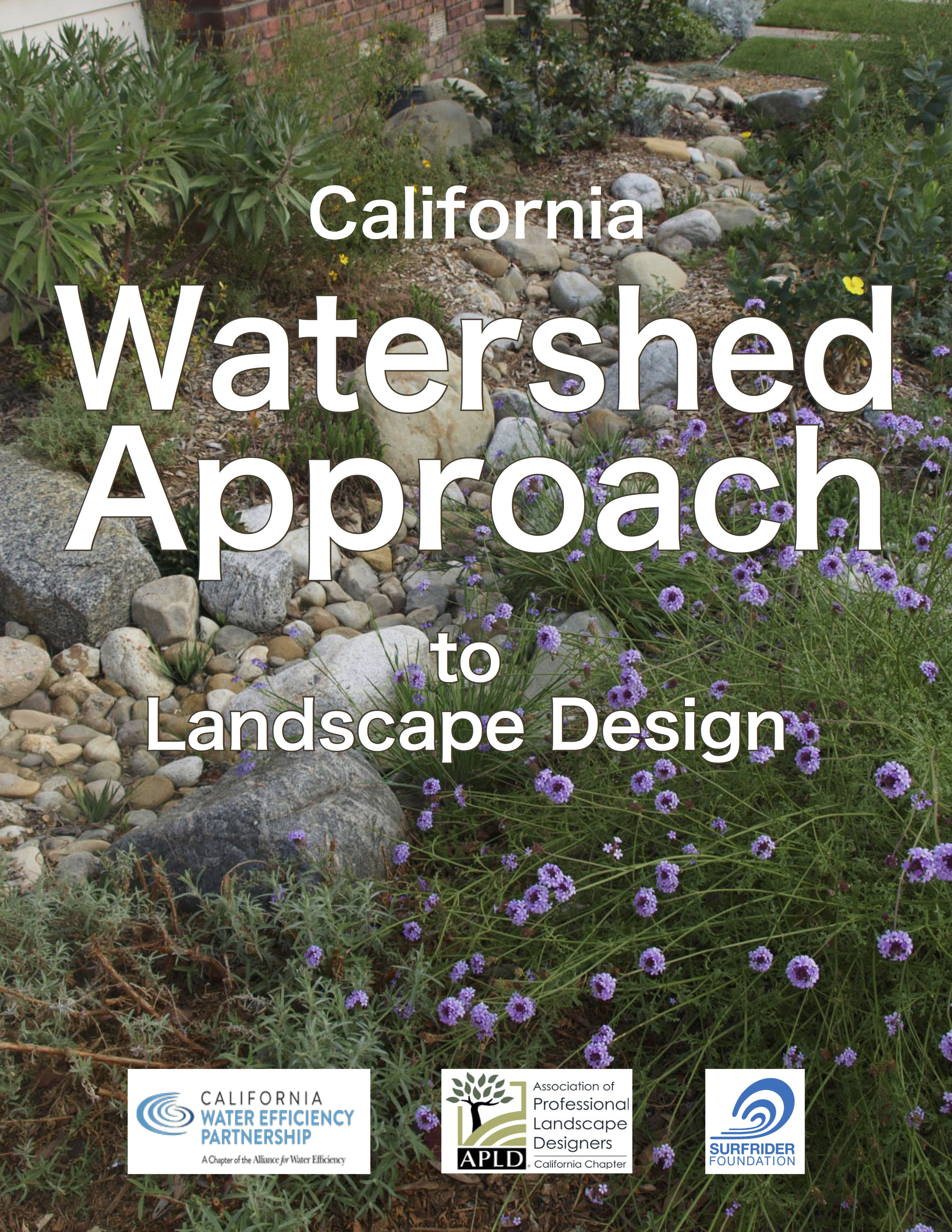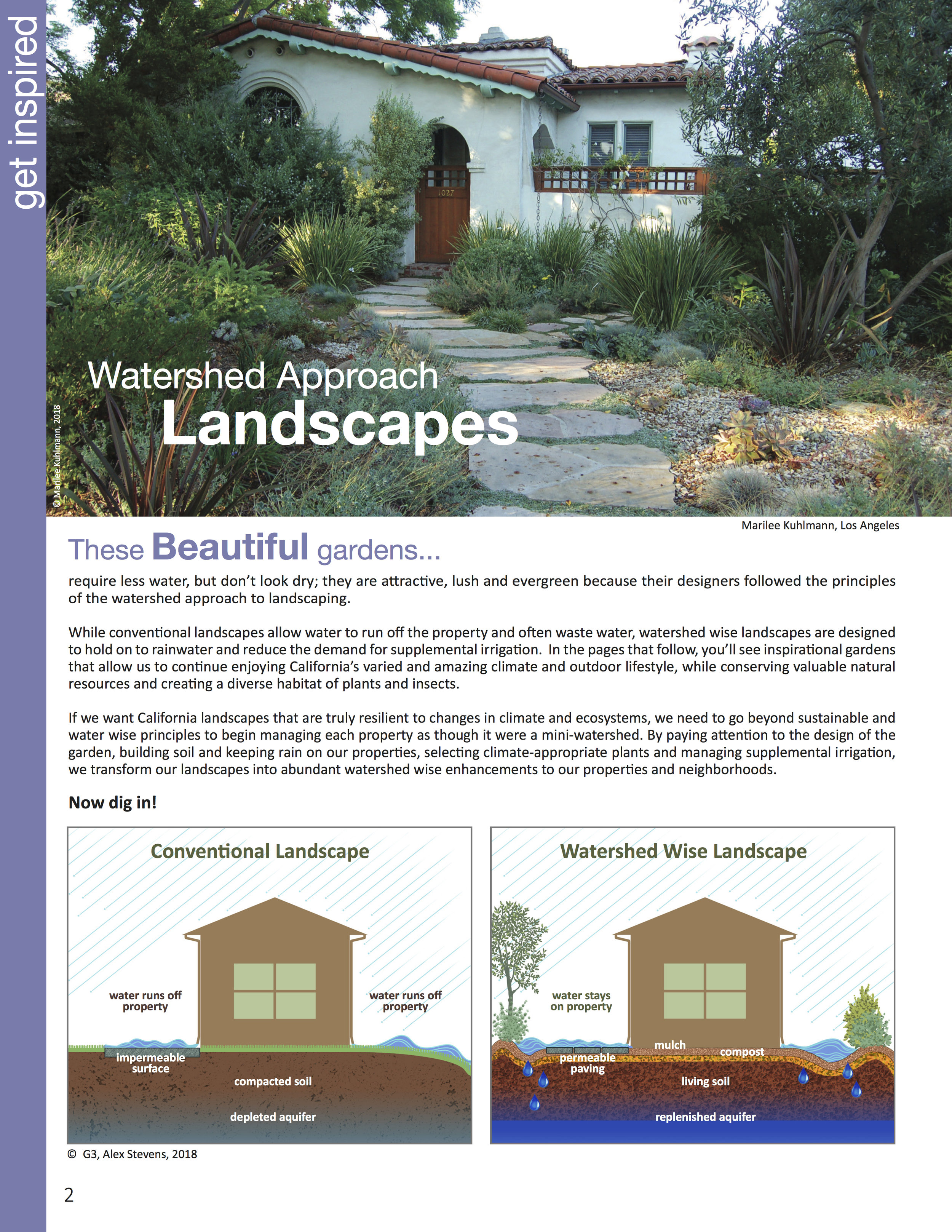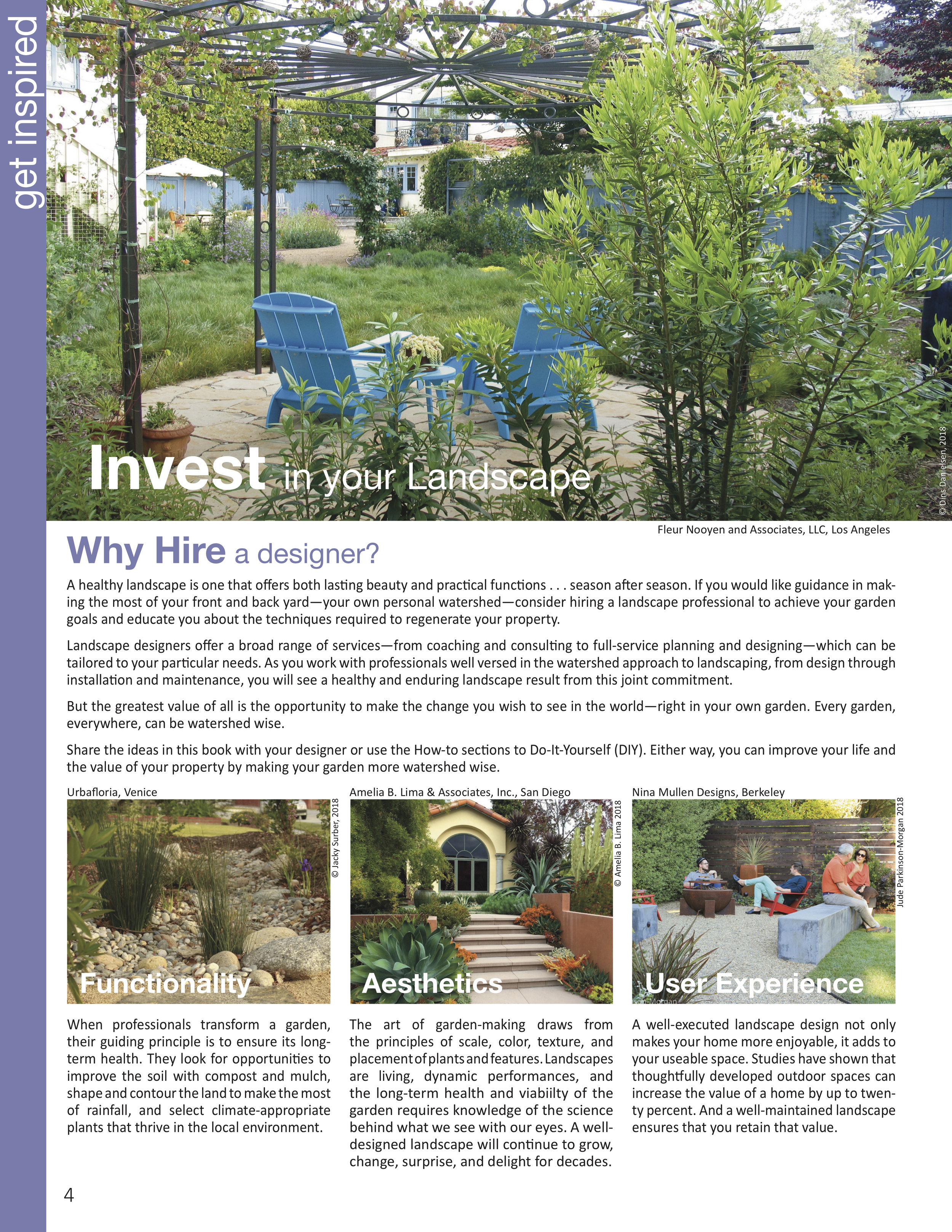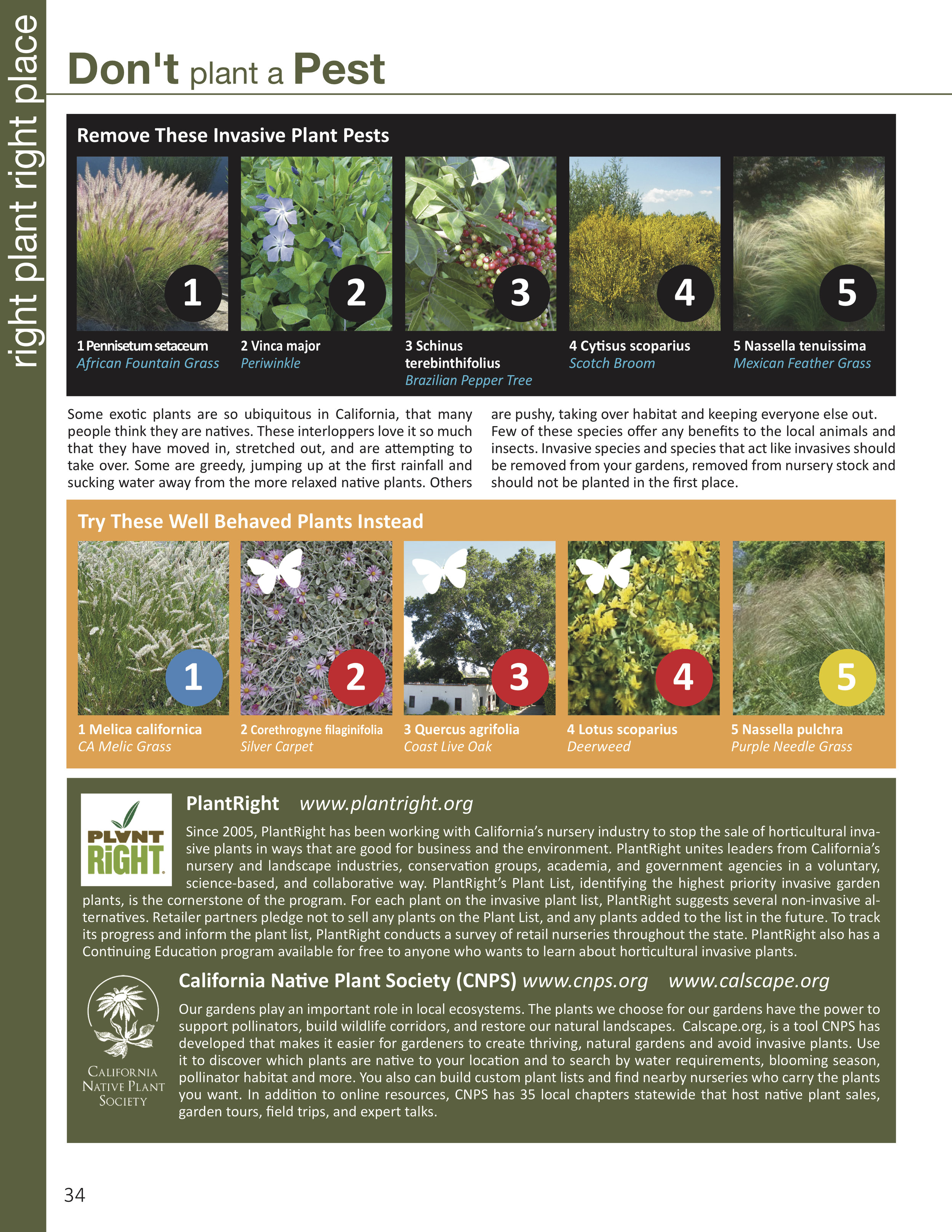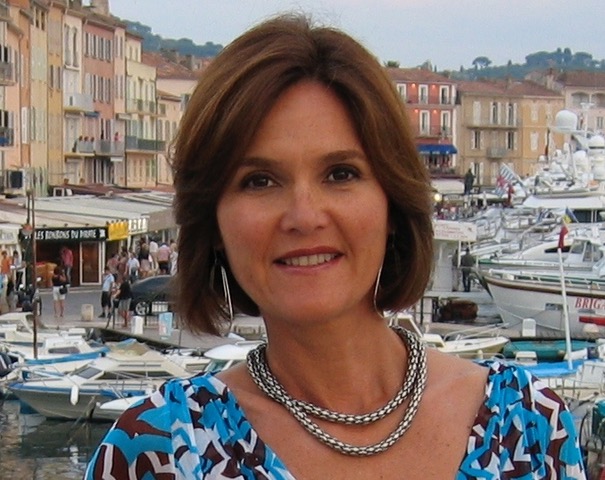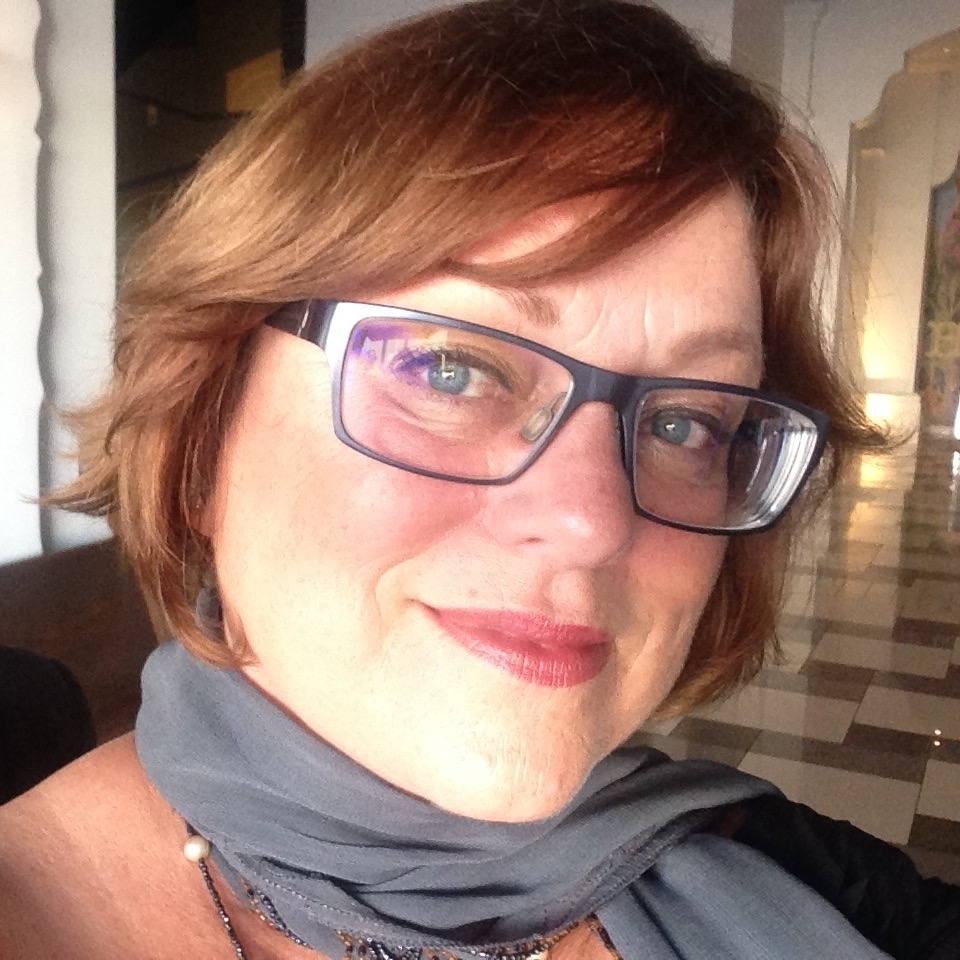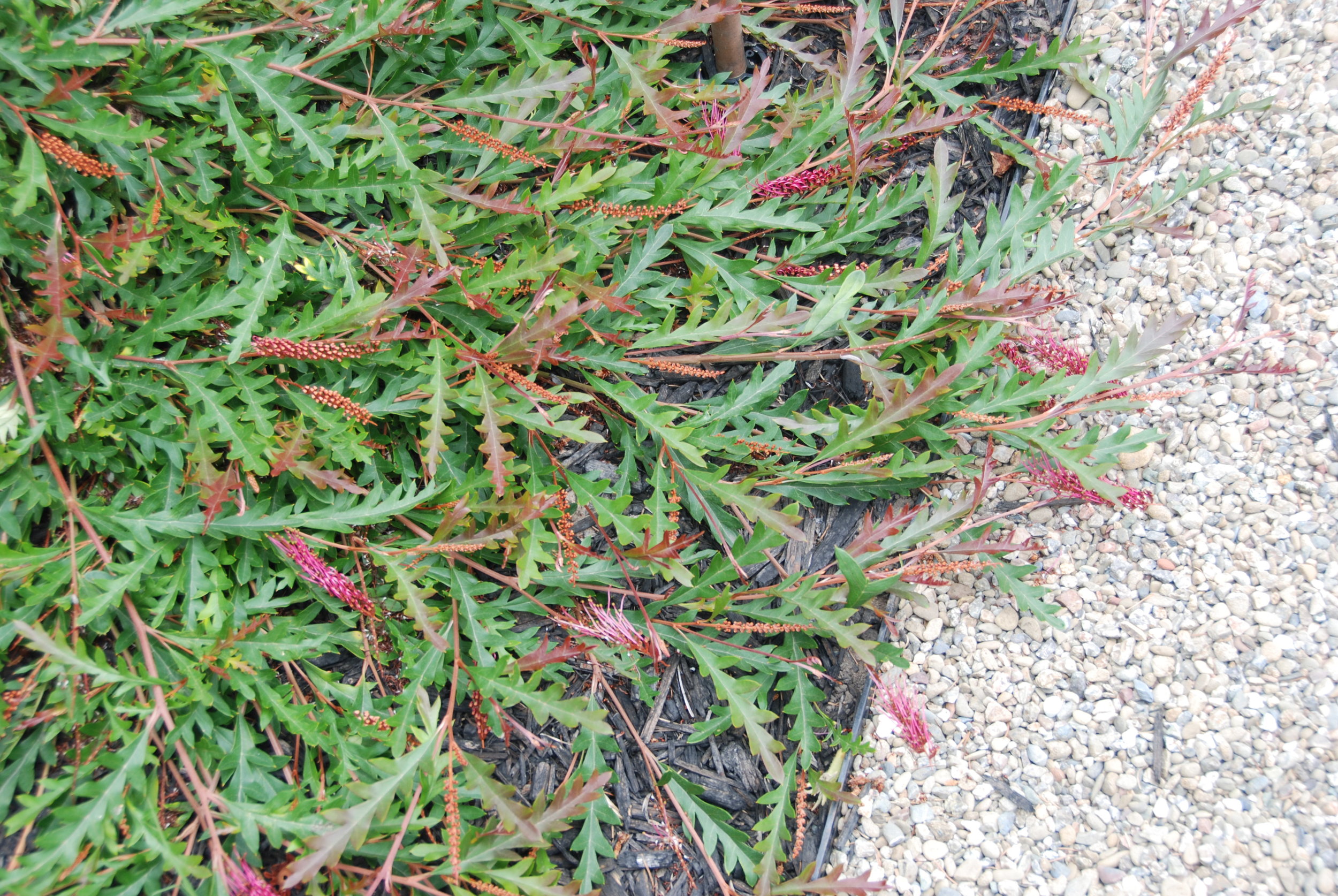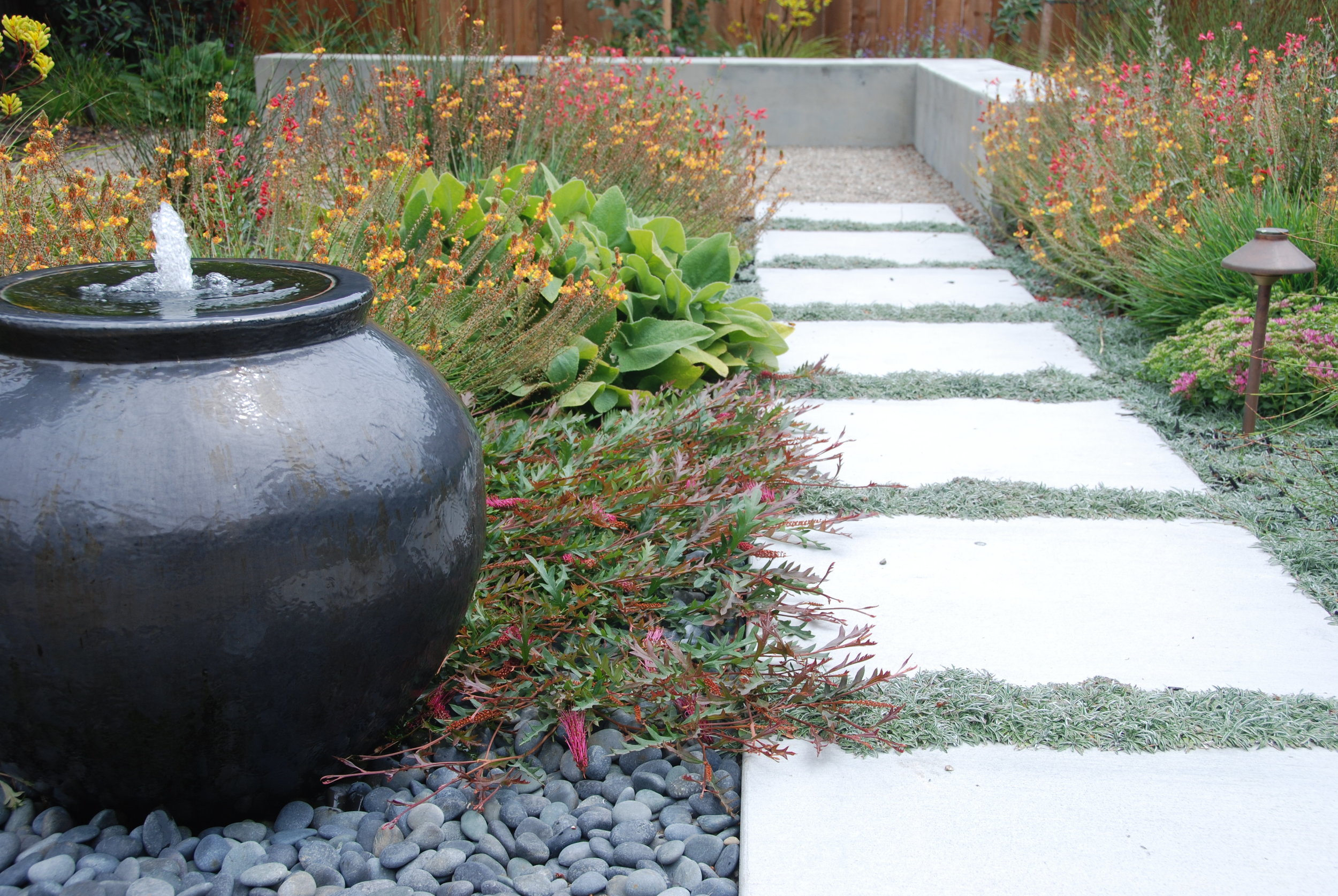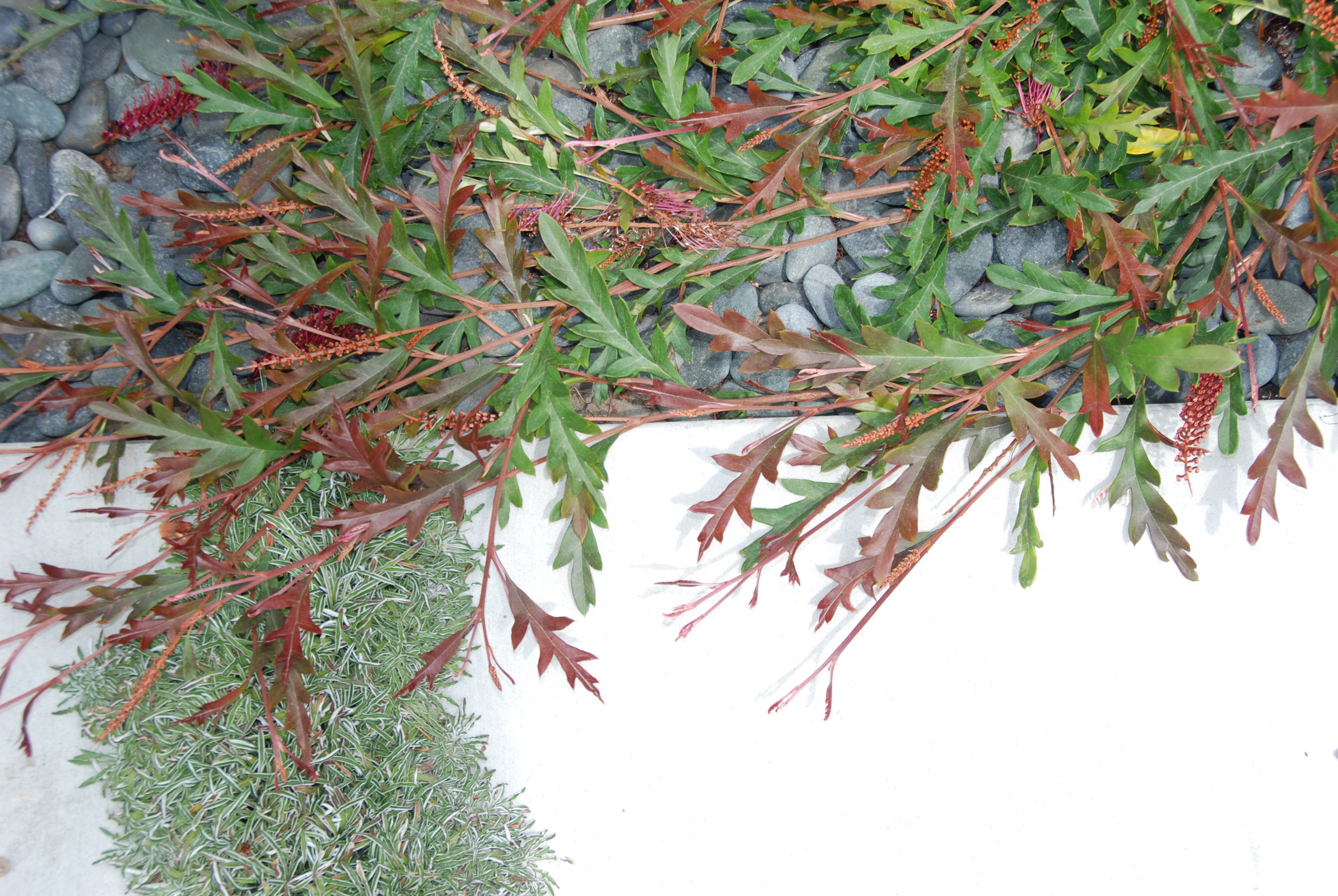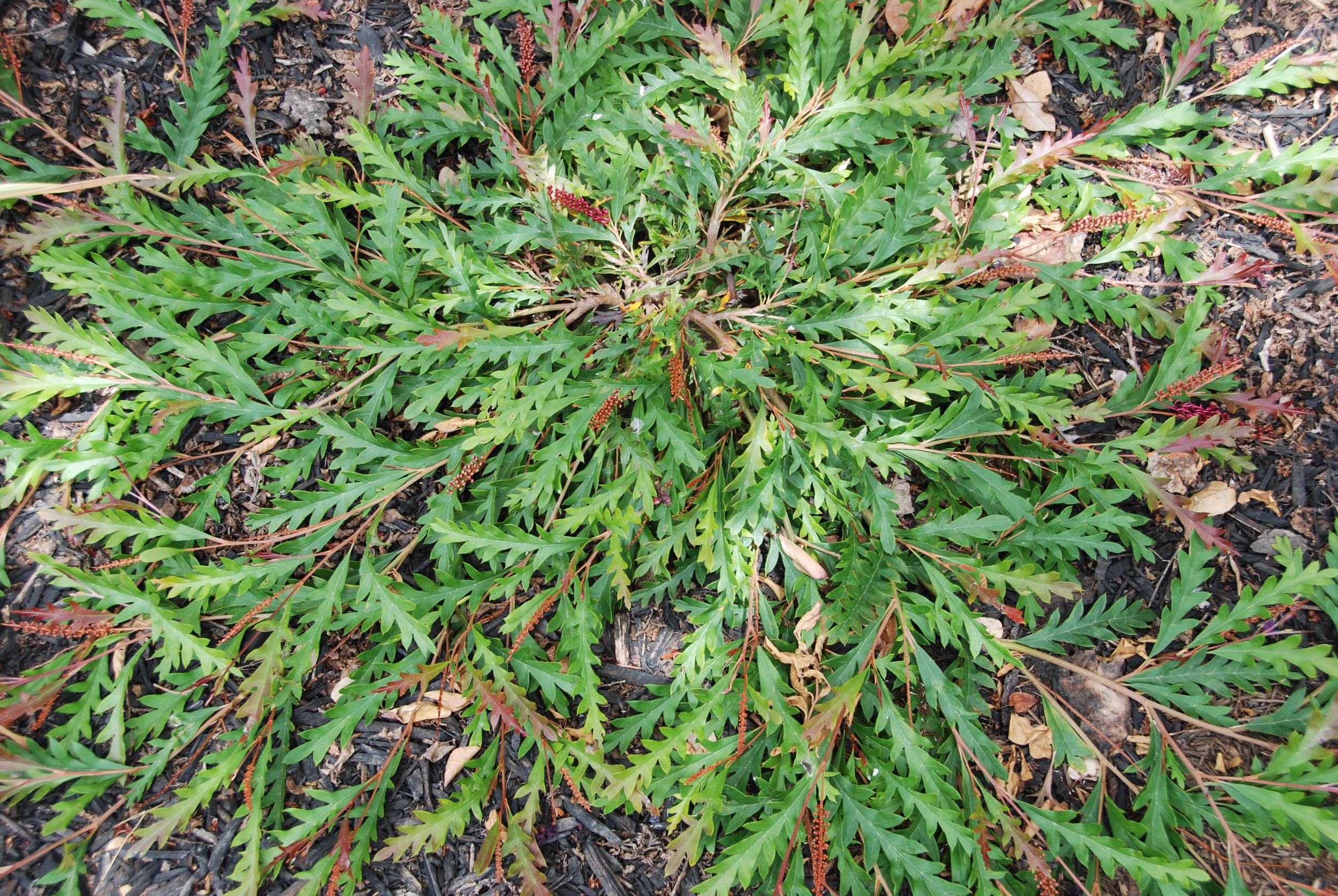Above garden featured in our April 8th LA garden tour. Design and photo: Johanna Woollcott, Wild Gardens LA
HOT OFF THE PRESS:
A New APLD-CA Book
APLD California Chapter announces the release of California Watershed Approach to Landscape Design, a beautiful 44-page, full-color publication featuring APLD members' garden photos from across the state.
It was all made possible by the incredible talents of Pamela Berstler and Alex Stevens of Green Gardens Group (G3) – an APLD-CA gold sponsor – and generous funding from the California Water Efficiency Partnership and the Surfrider Foundation.
The booklet will be debuted at the “A River Runs Through It” seminar (see below) and later will be made available to all APLD-CA members.
A RIVER RUNS THROUGH IT:
A New Landscape Paradigm
A 2-Day Seminar + Garden Tour Event
Presented by the APLD Greater LA & San Diego Districts
Expand your thinking on native plants and take a new look at the designed environment as well as the role we play as agents of change, stewards of the environment, and trustees of our personal spaces, our communities, and beyond.
Day 1: Speaker Forum
Saturday, April 7th, 9:30am - 4:30pm
Descanso Gardens,1418 Descanso Drive, La Cañada Flintridge, CA.
THOMAS RAINER, landscape architect, teacher, and author of Planting in a Post Wild World, will show us practical techniques for a more layered, intermingled approach that allows plant dynamics to happen in an aesthetic framework. Thomas is a horticultural futurist, fascinated by the intersection of wild plants and human culture.
BENJAMIN VOGT, author and activist, argues in his book The New Garden Ethic that our health and well-being depend on a strong connection with the natural world, and specifically on the original landscapes of the places where we live.
PAMELA BERSTLER, founder of Green Gardens Group (G3), is an educator and creator of the legendary Soil Summit. Her talk, Watershed Approach Landscapes, Make it Rain! will demonstrate through management of the Green Water Zone, how we can create a more beautiful and livable environment that ensures we have sufficient water resources to maintain our landscapes for generations to come.
ROSALIND CREASY, a pioneer in the field of edible landscaping and award-winning author of 18 books on gardening, will speak on Edible Landscaping—The New American Garden. She’ll address the basic principles of edible design and the A-Z of her recommended beautiful edible plants.
FRANK McDONOUGH is a writer, botanist, lecturer, photographer, and a botanical information consultant for The Los Angeles County Arboretum & Botanic Garden. He will speak on Trees That Thrive and how to maintain our urban forest. The drought in Southern California is causing us the rethink the use of trees in the urban and suburban landscape. Many of the trees currently in use are not only unsustainable but a cause for health problems as well. Frank looks at the current and future alternatives that may allow us to still have an urban forest in a climate that seems inhospitable to it.
Day 1: Evening Soirée
Saturday, April 7th, 6:00–8:00pm
Cap off the day with small bites and libations in a beautiful private garden designed by Bernard Trainor.
Day 2: The 3rd Annual APLD Greater LA Garden Tour
Sunday, April 8th, 9:30am - 4:30pm
From the San Fernando Valley to Pasadena.
Garden #1: Sunny Curb Appeal
Designed by Marilee Kuhlmann, Urban Water Group
This garden is the transformation from lawn to beautiful raised planting areas, dry stream bed and attractive entry. Sustainable / Watershed Features: Rain garden with downspout redirect; climate-appropriate plants.
Garden #2: Woodland Shade Garden
Designed by Johanna Woollcott, Wild Gardens LA
This garden artfully weaves a dry stream bed and sustainable plantings under large mature trees. Sustainable / Watershed Features: Two dry stream beds to infiltrate water from the roof; certified wildlife habitat; removal of impermeable surfaces.
Garden #3: Front Yard Habitat
Designed by Jacky Surber, Urbafloria
This garden employs a lush, but not thirsty, planting scheme and water feature to create an inviting respite for visitors of all species. Sustainable / Watershed Features: Climate-appropriate plants; habitat for many species; berms and swales to keep rainwater on site.
Garden #4: Blue Bayou
Designed by Laura Morton, APLD, Laura Morton Design
An old patchy turf lawn has been transformed into a stunning entertaining space surrounded by a meadow. Sustainable / Watershed Features: Redirection of rainwater from hardscape and roof to landscape areas; planting of native and nectar-rich plants; soil building with compost and compost tea.
Garden #5: Formal Rain Garden
Designed by Stephanie Bartron, SB Garden Design
This design repurposed scores of existing palm trees to build berms for sustainable plantings surrounding a formal rain garden. Sustainable / Watershed Features: Rainwater harvesting; hugelkultur (composting in place); California native plants ; efficient dripline irrigation; low-water/low-maintenance UC Verde Buffalo Grass lawn in back; organic soil maintenance (compost tea & mulch); permeable gravel walkways; all soil kept on site.
Garden #6: Native Splendor Under Oaks
Designed by Julie Deamer, Yard Queen
An attractive entry solution with rain garden and native plantings complementing the home and existing coast live oaks. Sustainable / Watershed Features: Rain from rooftop diverts into deep river rock–filled basin; permeable pathways; native 'dry shade' plants under coast live oaks.
Garden #7: Neighborhood Inspiration
Designed by Ketti Kupper, Conscious Living Landscapes
This artfully contoured garden highlights a beautiful dry riverbed and textural plantings.
Day 2: reception
Sunday, April 8th, 4:00–6:00pm
Reception and refreshments at garden #7!
APLD-CA MWELO 2020 Working Group
Your fellow APLD members in California are at work preparing for the release of a new draft of the California Model Water Efficient Landscape Ordinance. Chapter and District leaders have convened an MWELO 2020 working group to follow and review the submissions of the Landscape Stakeholder Advisory Group (LSAG), which may be incorporated into the new draft.
The LSAG, a volunteer group of local agency officials, landscape professionals, irrigation efficiency experts and suppliers, and environmental organizations, has worked diligently over the last year. Members met regularly to examine and propose clarifications, improvements, and relevance of the current MWELO, which was adopted in 2009, and revised in 2015. This year begins the next phase of regular MWELO updates, in alignment with the CalGreen update cycle.
The APLD-CA working group convened for the first time on March 8, with leaders from each of our four Districts, including Chapter and District advocacy and sustainability chairs. Their goal is to consolidate the voluminous LSAG commentary and identify proposals that APLD-CA can support, those we have questions about, and those that pose concerns.
This ongoing work will result in a comment letter on the first draft of the new MWELO. The working group will seek endorsement from the Chapter and District boards and the general membership. Watch for our next update and follow the second meeting of the MWELO 2020 APLD-CA Working Group.
If you wish to join in this process, please review the participation criteria. Members of the working group will attend up to three remaining working group conference calls (about 2 hours each), and spend approximately ten hours reviewing and contributing in writing to APLD-CA comments on the draft MWELO. We expect release of the draft MWELO within the next several months. Contact your local sustainability or advocacy chair by email. See the APLD-CA District contact pages at www.apldca.org to find your Chapter and District contacts, or email our Chapter advocacy chair, Amelia B. Lima, APLD, at advocacy@apldca.org.
Additional opportunities to participate include a chance to sign on to the official APLD-CA comment letter, as well as informal, in-person meetings at the District level, for review of the proposed changes to the ordinance. Let’s ensure that the voice of APLD-CA is be effective in making the model ordinance a meaningful and practical guideline for water-efficient landscapes throughout the state.
For background on the current version of the California Model Water Efficient Landscape Ordinance, visit the Department of Water Resources (DWR) website, CLICK HERE.
by Amelia Lima, APLD, and Maureen Decombe,
APLD California Advocacy Committee
PLANT SPOTLIGHT:
Grevillea ‘Austraflora Fanfare’
If I had to pick just one favorite groundcover, it would be Grevillea ‘Austraflora Fanfare’. A real showstopper with its bold saw-tooth leaves in shades of deep green and bronzy-red on willowy stems that spread densely along the ground—often up to 15 feet!
I almost prefer it when it isn’t in flower, but they are the fantastic typical Grevillea “hair brush dipped in red paint.” I think of it as beautiful “living mulch” that can economically cover large areas, reduce evaporation and smother weeds.
In the San Francisco Bay Area gardens that I’ve used it in, it does best with good drainage, a little bit of shade, and very little water once established. It seems to be ignored by deer, rabbits and gophers but is quite attractive to hummingbirds and other beneficials.
This plant can be a little tricky to source these days, but I’m hoping if there is more demand from designers we will entice growers to ramp up production of this fantastic groundcover. It is similar in appearance to Grevillea gaudichaudii but has been more garden tolerant and faster growing in my experience.
by Mary Fisher, APLD
APLD Bay Area District Programs Chair
& CA Chapter Communications Chair
BOOK REVIEW:
Eating on the Wild Side, by Jo Robinson
This is the book I have been waiting for. From the first day I tasted just-picked fruits and vegetables, I have maintained that everything tastes better when you eat it right after it’s harvested. I could never find any scientific proof to support my belief until I found Jo Robinson’s book—she explains why.
This short yet informative research-based read provides an explanation of how nutrients have been bred out of the food that we eat. Going back to the days of the hunter-gatherers—over 10,000 years ago—Robinson paints an informative picture of how humans have intuitively been selecting the sweetest, starchiest, least bitter and sour edibles, which possess the lowest nutritional value when consumed.
My favorite part of the book is the list of fruit and vegetable varieties Robinson recommends buying, along with instructions on how to prepare them for the most nutritional value. She even points out which varieties can be found in conventional markets and which are more likely to be in farmers’ markets, as well as which can be grown in home gardens.
Eating on the Wild Side is a great motivator for finding a special patch of land—or simply a patio—to grow the most nutritious fruits and vegetables possible.
Happy Reading, Healthy Eating
Reviewed by Jackie Seidman
APLD San Diego District Secretary

